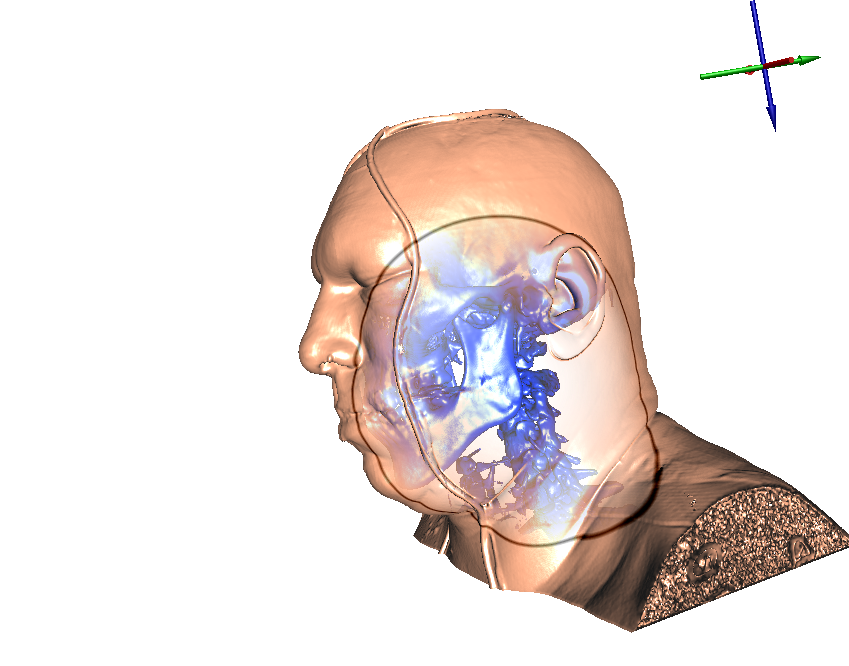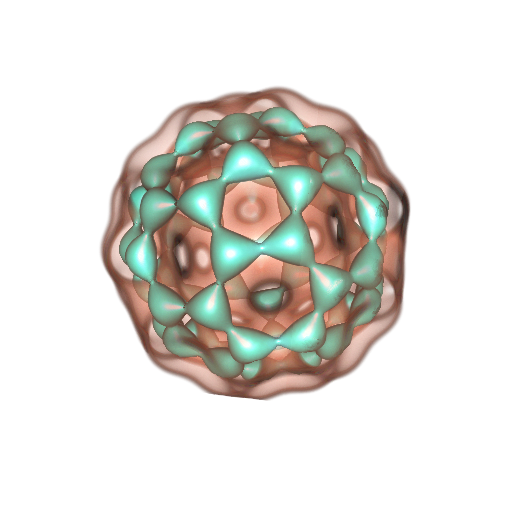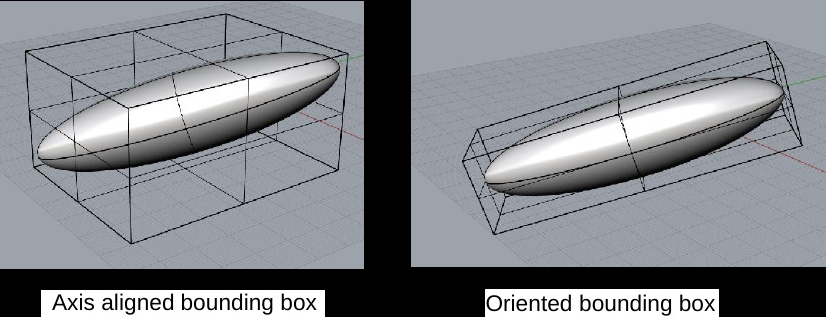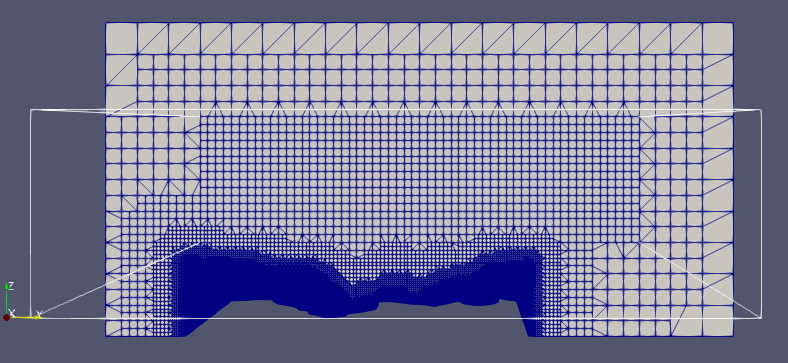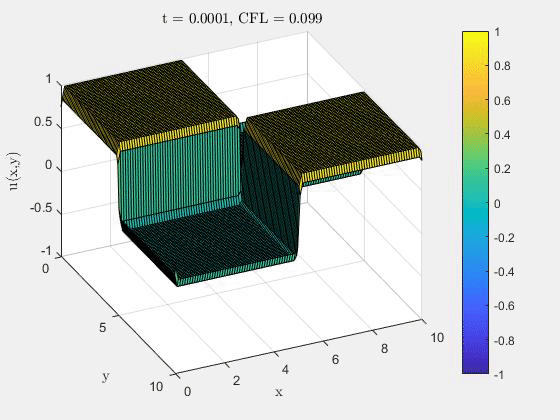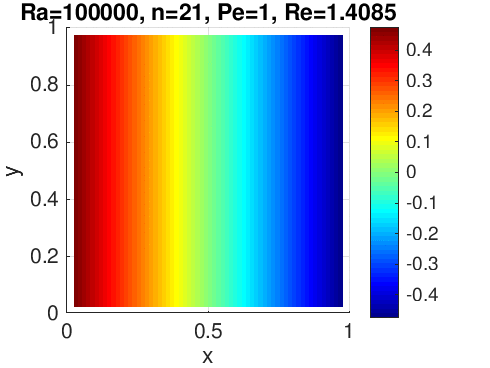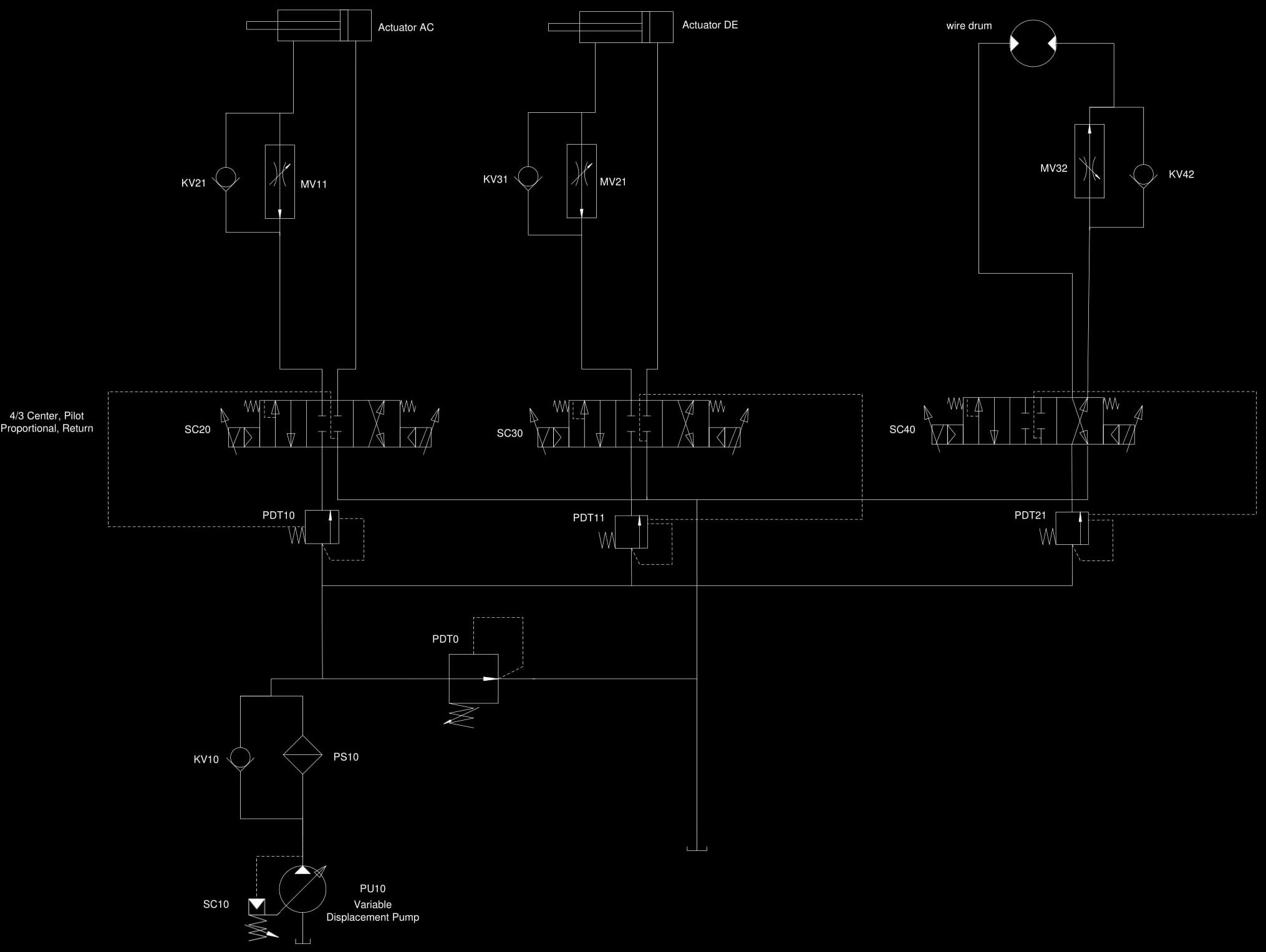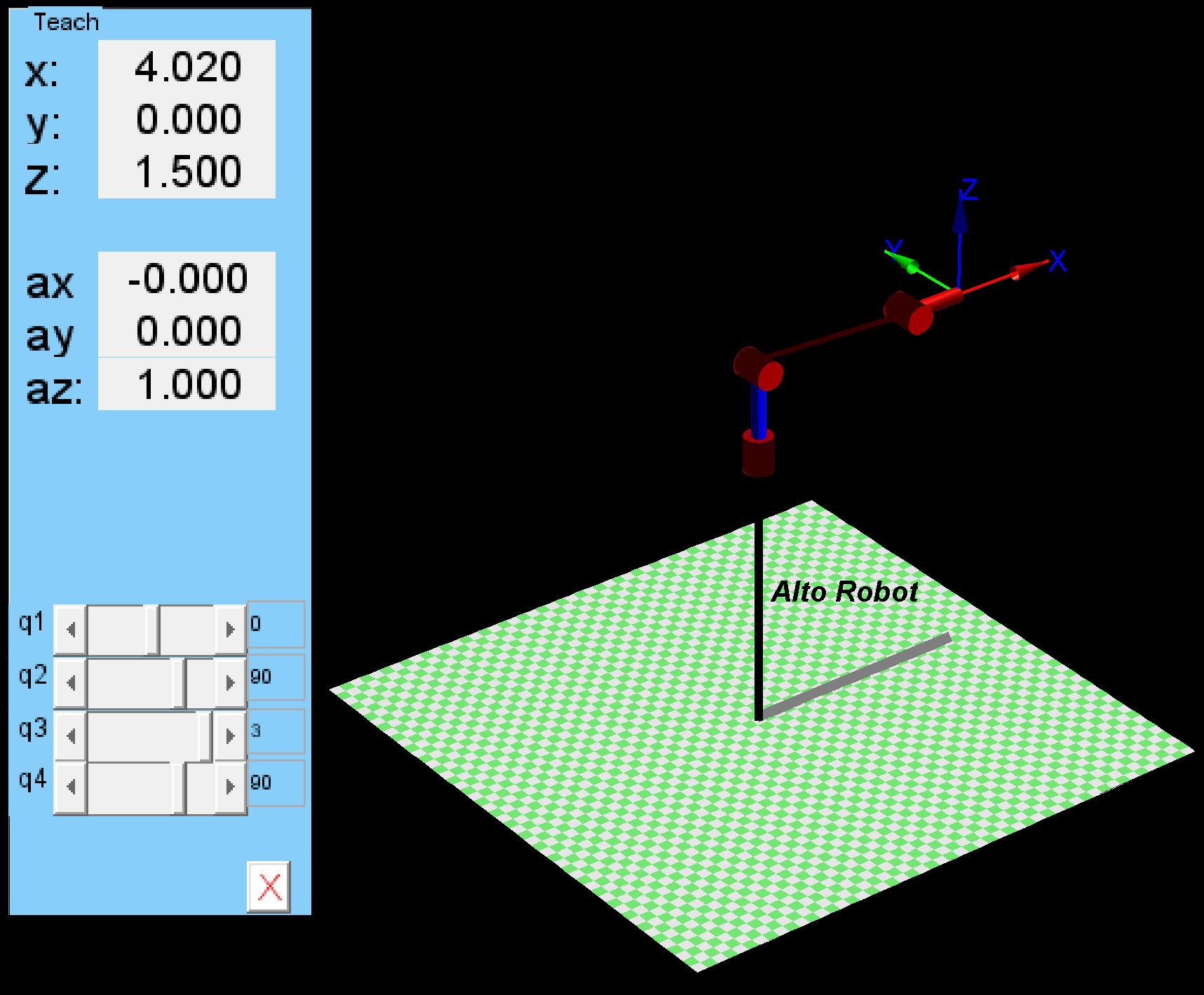Projects(Last update: Dec 30, 2019)
Here you may find some projects that I worked through my education These projects will probably not updated as I am no longer a student. Please dont hesitate to contact me if you have any question, as well as in need of source codes/data.
- Interactive Exploration and Computational Steering in CAVE-like Environments for High-Performance Fluid Simulations (Masters Thesis)
- Flexible Pre-Processors for Fluid Simulations
- Turbulent Flow Simulation on HPC-Systems
- Nusselt Correlation to Predict Heat Transfer from an Oscillated Vertical Annular Fluid Column through a Porous Domain (Published Article)
- Design and Numerical Study of a Chimney to Improve Indoor Air Suction by Using Topographical and Meteorological Databases (Bursa-Turkey Case Study) (Bachelors Thesis)
- Convergence Accelerator Methods for Coupled Problems
- Implementation of Preprocessing Features for KRATOS Multiphysics in the Pre/Post-Processing Software SALOME
- Sieve of Eratosthenes Using MPI
- Scientific Visualizations of Various Data using ParaView and ImageVis3D
- Quadtree with C++
- Rhino3D Macro Implementation for Axis Oriented Bounding Box
- OpenFOAM Snappy Hex Mesh Automatization Script
- Various CFD Code Implementation on MATLAB at TU Munich
- Natural Convection in a Cavity ( 2D Finite Volume Method Code Implementation )
- Various Projects Snaps from Different Universities
Interactive Exploration and Computational Steering in CAVE-like Environments for High-Performance Fluid Simulations (Masters Thesis)
This project is to enhance the capabilities of a current high-performance solver. The enchancements include adding/deleting/moving geometries, modifying boundary conditions while the simulation is running and in-situ data visualization for CAVE virtual environment. While the project is pure C++, the CAVE side developed using Magnum Engine(OpenGL based light-weight game engine)
The final thesis can be read here.
Return to Top
Flexible Pre-Processors for Fluid Simulations
Flexible pre-processors are required to generate meshes for fluid simulationswithin finite volume’s framework, especially for complex domains. Having such pre-processors is an advantage for users to simulate fluids in many real-life applications. In this project, water simulations are chosen using an in-house code NUFSAW2D, which employ an edge-based cell-centred finite volume method to solve the 2D shallow water equations.Like common finite volume codes, NUFSAW2D requires meshes as a spatial discretisation of a domain. The tool converts unstructered meshes into proper edge based input files, as well as additional features such as renumbering the neshes according to various schemes e.g. space filling curves.
Poster for presentation at TU Munich
A simulation resulted from the mesh processed through the tool :
Turbulent Flow Simulation on HPC-Systems
In teams of two to four students, the participants develop a three-dimensional RANS flow code from a C++ flow solver with basic functionalities. A suitable turbulence model is implemented and the RANS code is parallelized for distributed systems (i.e. LRZ). Generic test cases are simulated and compared to reference data to validate the new features. For the final project, both a numerical simulation with the own code and experimental measurements of the equivalent configuration will be conducted and compared. The considered test case is the flow over a backward facing step, commonly used for turbulence model performance evaluation.
Nusselt Correlation to Predict Heat Transfer from an Oscillated Vertical Annular Fluid Column through a Porous Domain (Published Article)
Experimental evaluation of the heat transfer in oscillating flow under the constant heat flux and constant amplitude fluid displacement conditions is presented for a vertical annular flow through a stainless steel wool porous media. The analysis is carried out for two different heat fluxes and for five different frequencies. The data is acquired from the measurements both in the initial transient period and in the pseudo-steady (cyclic) period by the system. The physical and mathematical behavior of the resulting Nusselt numbers are analyzed, according to data acquired from the experiments and in accordance with the results of the Buckingham Pi theorem. A cycle and space averaged Nusselt number correlation is suggested as a function of kinetic Reynolds number for oscillating flows. The suggested correlation is useful in predicting heat transfer from oscillating flows through highly porous and permeable solid media at low actuation frequencies and at low heat fluxes applied in the wall. The validity of the Nusselt numbers acquired by correlation is discussed using experimental Nusselt numbers for the selected kinetic Reynolds number interval. The present investigation has possible applications in moderate sized wicked heat pipes, solid matrix compact heat exchangers compromising of metallic foams, filtration equipment, and steam generators.
Design and Numerical Study of a Chimney to Improve Indoor Air Suction by Using Topographical and Meteorological Databases (Bursa-Turkey Case Study) (Bachelors Thesis)
Carbon monoxide(CO) poisoning is one of the major and common problems in the region of the Bursa, every year CO poisoning is the main cause of about ten thousand emergency department visit. Especially, during winter months the CO poisoning due to inefficiency of chimney draft drastically increases. The purpose of this study is to conduct numerical simulation by using computational fluid dynamics(CFD) models to analyse the effect of the wind over complex terrain, its consequences on chimney, and to investigate various parameters that may be effecting chimney draft including the shape of chimney caps.
Poster of the project at Istanbul Technical University
Convergence Accelerator Methods for Coupled Problems(Solid-Fluid Interraction)
Fluid-structure interaction problems can be solved either in a monolithic way, where the flow and the structure equations are solved simultaneously or in a partitioned way, where these equations are solved seperately. In this report the partitioned approach is followed and several strategies to accelerate the convergence of interface residual resulting from the coupling of the Neumann and the Dirichlet sub-domains are studied, implemented, applied, explained and compared using the light python package pyKratos(A small package of the open source finite elements method tool, Kratos). These methods include the fixed-point methods (with static and dynamic relaxation factor), interface quasi-Newton least squares (IQN-ILS) and multi-vector interface quasi-Newton (MV-IQN) methods. A simple Dirichlet-Neumann Structure-Structure problem was analyzed, for which the MV-IQN method outperformed the other methods with the least average number of interface residual evaluations per time step.
Return to TopImplementation of Preprocessing Features for KRATOS Multiphysics in the Pre/Post-Processing Software SALOME
The purpose of this project was to create a tool that’s can be used as an interface between Salome, which is a preprocessor for creating geometries and associated meshes, and Kratos which is a finite element modelling program. Preprocessing is a process which converts one type of data into another to prepare it for the next process. Which were the main objective of this study, where focus in this report lays on meshes. Different types of meshes and different kind of mesh generations algorithms. The Salome-Kratos plugin gives the user the option to apply boundary conditions, materials properties and solver settings in Salome before exporting the data in the correct file type to be opened in Kratos. For now, there are some improvements that could be done to the plugin-program, being that for fluid problems there still is some improvement needed to work perfectly and also getting the remaining buttons to work.
Sieve of Eratosthenes using MPI
The Sieve of Eratosthenes is a simple, ancient algorithm for finding all prime numbers up to any given limit. As a small MPI training, I implemented an MPI version of it. For example: The largest prime number in 10000000 is 9999991, which is calculated in 1.686577 seconds using 4 nodes. Example output of the code is :
Number entered is : 10000000
Domain 0 has the size of 2500000
Domain 1 has the size of 2500000
Domain 2 has the size of 2500000
Domain 3 has the size of 2500000
Square Root N : 3162
Results:
Global minimum =3163
Iteration number = 446
Global maximum =9999991
Elapsed time is 1.686577 sScientific Visualizations of Various Data using ParaView and ImageVis3D
Some visualizations from scientific visualization project can be found below. During this project, many large data was rendered into visual expressions to get some meaningful information.
Return to TopQuadtree with C++
One of the first projects in TU Munich. Creating a simple 2D octree using C++. Later, we used octrees to use background for generation of adaptive space-filling curves in Flexible Pre-Processors for Fluid Simulations.
Rhino3D Macro Implementation for Axis Oriented Bounding Box
The goal of this project was to create an axis oriented bounding box for Rhino3D. The code is written in C++ and glued to Rhino3D through Python interpreter. C# code was used to glue Python with C++.
OpenFOAM Snappy Hex Mesh Automatization Script
Throughtout the SnappyHexMesh work, the aim was to determine the effect of the parameters in snappyHexMeshDict on mesh. For that case, the parameters were examined when there is a searchablebox for cases while other parameters were kept constant. Two investigation was done for the parameters Castellated mesh, and Snapping. According to the results, automation scripts for searchableBox was written using bash scripting and python.
Return to Top
Various CFD Code Implementation on MATLAB at TU Munich
Natural Convection in a Cavity ( 2D Finite Volume Method Code Implementation )
A finite-volume method solution to the incompressible Navier-Stokes equations in two-dimensions was developed. The code was built using MATLAB. Below in the gif, an example result of Natural Convection is a Cavity can be seen. The results were also compared to the benchmarks in the literature.
Various Projects Snaps from Different Universities
Panel With A Hole (FEM-ANSYS)
Rotating Mesh Simulation (CFD-FLUENT)
Volume Of Fluids(VOF) Simulation (CFD-FLUENT)
Refrigeration System For A Supermarket
This project deals with a refrigeration system in an arbitrary supermarket. The system is used to cool down dairy products such as milk, cheese and yoghurt. The dairy products are transported from the dairy to the supermarket through refrigeration vans. According to the Danish Ministry of Food, raw milk must not exceed a temperature of 10°. Therefore, the temperature in the refrigeration vans are set to 10$\C$. The dairy products must be quickly cooled down to a maximum temperature to 6$\C$. In this case the storage temperature is set to 5°. A caption of PI diagram of the system can be seen below.
Crane Design (Hydraulics and Fluid Power)
A marine crane is designed for maximum 3 tones. The static calculations aredone, necessary components are selected, the hydraulic and operating cycle is described.Moreover, the steady state analysis and transient analysis is done to see its behavior.Also, the efficiency and its energy consumption is calculated.
Cleaning Robot Control (Robotics)





